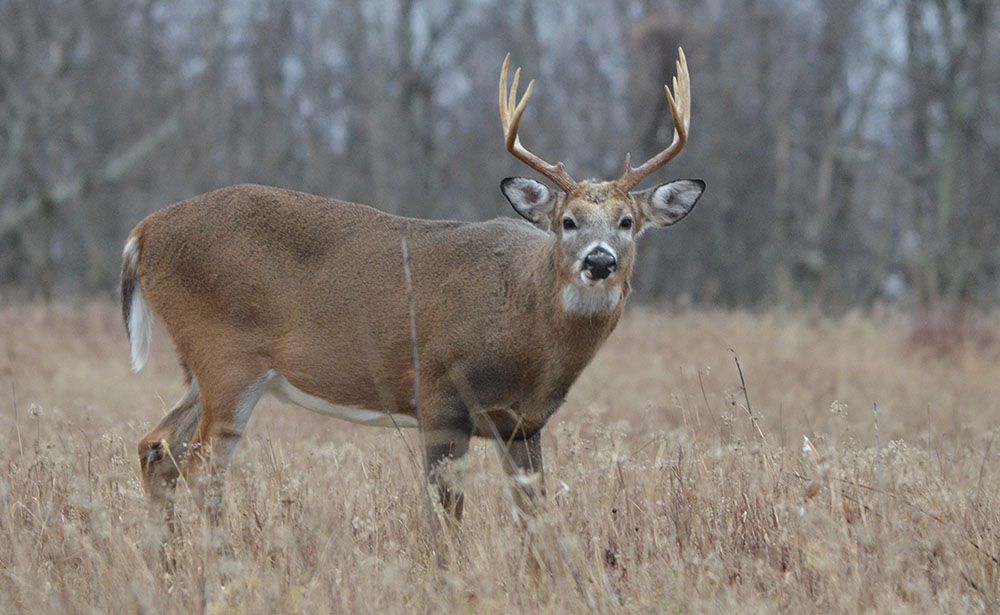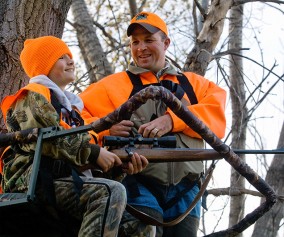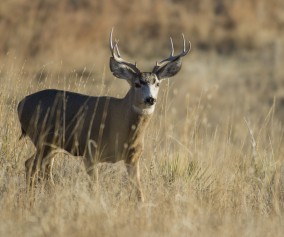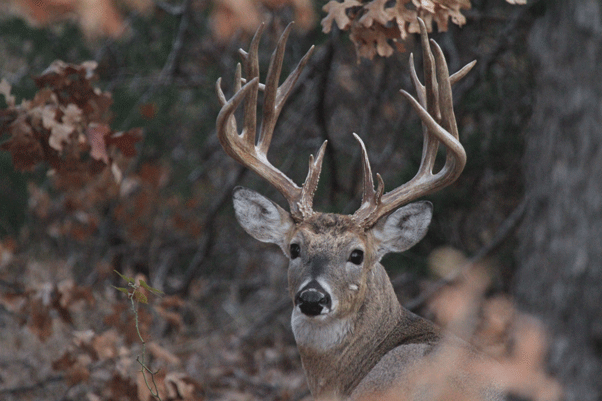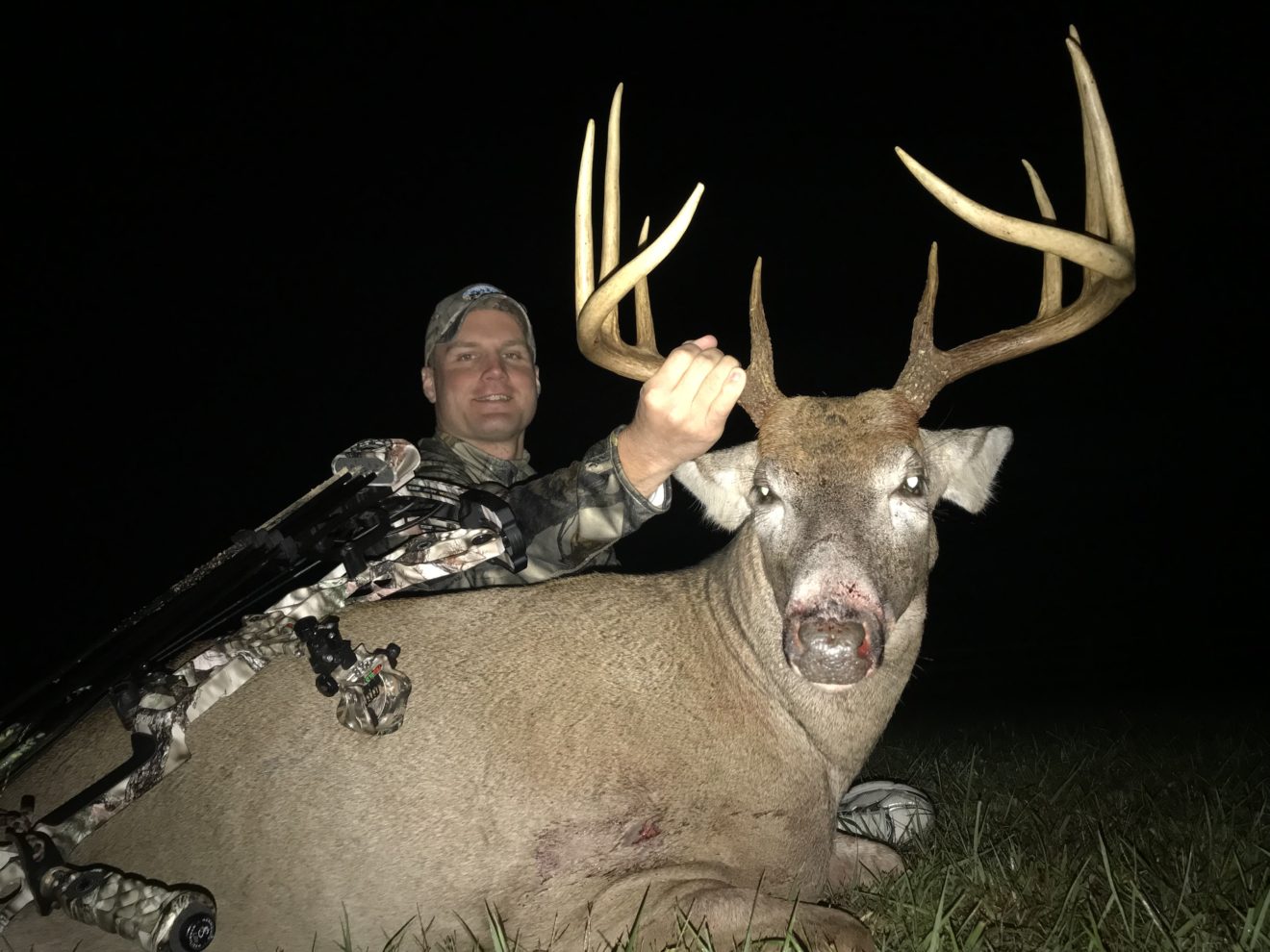5 Budget-Friendly States for Non-Resident Deer Hunters
Do you ever think about crossing state lines to deer hunt, but the notion seems overwhelming? It’s not as difficult or expensive as you might think.
There are many reasons to consider feeding your whitetail wanderlust. For one, it provides you with more tags, hence more whitetail hunting opportunities. Of course, with that also comes the possibility of extra venison. Secondly, it feeds your sense of adventure. Hunting in Texas, I’m treated to a variety of terrain, cover, and antler classes. However, it’s always nice to see new territories, even different trees.
Out of State Hunting
For trophy hunters, in particular, there are always the dream destinations like legendary whitetail states such as Iowa and Illinois. What hardcore deer hunter doesn’t notice the seemingly common mammoth free-range bucks taken in Pike County Illinois; or the brute B&C bucks taken on Lee and Tiffany Lakosky’s Iowa farms. It can make you covet such notable locations, if not just the idea of trying something different outside the confines of your home state.
Indeed, on television, hunting channels, YouTube, and social media lies other worlds full of whitetail eye-candy. However, many of these parts represent both a difficult and expensive endeavor. Out-of-state deer hunting is more expensive overall than it was at the turn of the century. For example, archery deer tags in Iowa currently cost over $500. For example, there is typically a 3-year wait for a non-resident bow tag.
Fortunately, there are whitetail journeys that are still attainable for the average hunter – over the counter opportunities involving reasonable prices and freedom from draw systems and waiting periods. If you’re going to make the leap, it’s important to research it early and map it out during the offseason. Here is a list of 5 of the most affordable deer hunting destinations in the country. Hopefully, it will provide you with a head start and some motivation.
Nebraska
The Cornhusker state offers a good variety of opportunities for different hunting styles. It features the Sandhills (west to west-central), river bottoms (south-southeast), and the Pine Ridge hills (west). Diversity reigns supreme in this often-overlooked state. Hunting pressure is typically low, with a very sparse population between its towns and cities.
Mid-higher aged bucks are attainable here, especially in the central and western regions. Another plus is that active food plots are common in many of the state’s Wildlife Management Areas (WMA’s). This means that, with a little scouting and strategy, area bucks and travel patterns can be determined.
Bag Limit: 2 either-sex licenses can be obtained. Further, archery deer licenses are valid for either whitetails or mule deer in many areas.
Nonresident fees: Habitat Stamp, $25; Deer Permit, $242
Visit Outdoor Nebraska for more information.
Oklahoma
First off, the Sooner State provides a bounty of opportunity harvest-wise offering a whopping six deer (two bucks) for bowhunters. With almost one-million available public hunting acres, opportunity abounds. The cat is out of the bag, as Oklahoma has gone from whitetail sleeper-state to a go-to destination for mature whitetails. In fact, according to the Quality Deer Management Association (QDMA), more than half of the state’s harvested bucks are 3.5-years old or greater. Now that’s an attractive and rare statistic.
Oklahoma’s Wildlife Management Areas (WMAs) are particularly attractive, with many of them featuring good whitetail habitat. The southeast region of the state features favorable timber and cover and has the state’s biggest deer population. Additionally, though whitetails are by far the state’s greatest draw, the western region is home to mule deer.
Bag Limit: Six deer (no more than two may be antlered)
Nonresident fees: Deer License, $300 (archery, rifle, or muzzleloader)
Visit Wildlife department for more information.
Ohio
If it’s big whitetails you seek, the Buckeye State is definitely worth consideration. The heavily-wooded expanses of the state annually yield large bucks – some of the biggest in the nation. Why? For one, there is outstanding food and habitat there, including oak and hickory forests and an abundance of agriculture.
If there is one hitch, it’s a lack of public land. Like Texas, Ohio lands are over 90% privately-owned. So, you may have to find a good outfitter or an in with a friend of a friend. If you do seek out to hunt Ohio’s public grounds, the southeast part of the state is dense in cover and, with good strategy and patience, archers can have favorable hunting opportunities.
You’re limited to one antlered buck per year. However, Ohio exercises good deer management and there is a solid “let them grow” mentality. This means more chances at mature whitetails for the non-resident hunter. Throw in Ohio’s extensive archery season (late September-early February), you’ll want to check out this state for a whitetail roadie.
Bag Limit: Six deer (one antlered). Check special regulations for public land limits.
Nonresident fees: Annual Hunting License, $141.50; Deer Permit, $41
Visit Ohio dnr for more information.
Texas
Simply put, deer hunting is king in the Lone Star State. In fact, 600,000-700,000 hunt deer in Texas each year. Have no fear though, it’s larger than some countries and deer populations are sky-high, especially in the hill country and South Texas brush country. Perhaps the biggest drawback is, like in Ohio, over 90% of the state’s lands are privately-owned. On the other hand, there is no shortage of guides, outfitters, and lodges at various price points to accommodate you. There are public land opportunities though. If you’re not lucky enough to win a draw hunt, there are plenty of free (if not really cheap) public stretches that will test your deer hunting skills.
With a non-resident license of $315, Texas doesn’t offer the cheapest alternative, but there is much more to consider. Many areas offer high bag limits. Moreover, farms and ranches participating in the state’s Managed Lands Deer Program (MLDP) offer higher bag limits and extended seasons for both rifle and bow. To go with the deer hunting, a healthy contingent of exotic game roams the vast state, especially in the hill country region – blackbuck antelope, axis deer, and Nilgai antelope, just to name a few. And they can be hunted year-round.
Whether on free-range ranches or game-fenced operations, Texas offers an abundance of whitetail action for all antler classes.
Bag Limit: Variable per county. No person may exceed the annual bag limit of five white-tailed deer (no more than three bucks). The annual bag is higher on Managed Lands Deer Program (MLDP) properties.
Nonresident fees: Deer License, $315
Visit TPWD for more information.
Missouri
Rich in public hunting land, Missouri is a DIY hunter’s dream. With over 500 state conservation areas throughout the state, non-resident whitetail junkies can find prime hunting setups with a little research and planning. Detailed info on each parcel complete with helpful aerial maps is located on the Department of Conservation’s website.
Arguably, the most attractive part of the “Show Me State” from a hunting perspective is its geographic location. Directly bordering whitetail super-states, Kansas and Iowa, it offers good whitetail genetics. It also has manageable winters and plenty of rich nutrition for deer. Though it has had recent incidences of both CWD and EHD, it has a solid population of whitetails.
Also contributing to quality deer hunting is the state’s management mentality, with many counties having a restriction on 4-pointers. In these areas, bucks are also required to have at least one antler side sporting at least four points. Combine these traits with generous bag limits for bucks and reasonable out-of-state fees, and Missouri is a winner for the non-resident hunter.
Bag Limit: 2 deer of either sex (1 buck must be harvested prior to November 11th)
Nonresident fees: Archer’s Hunting Permit, $225
Visit MDC for more information.
Do you regularly hunt from the same stands on the same properties year after year? First off, if you do, you’re blessed to have a place to hunt. Still, an out-of-state hunt will not only provide new adventure but grow your whitetail experience.
There is just something exciting about hunting new grounds and seeing new sights along the way. Start planning now and get your hunting road trip on. What are you waiting for? Once your out of state hunt is secured you can enjoy the anticipation of a new whitetail adventure.
Based in Texas, Jerald Kopp is President of 1st Light Hunting Journal. His articles cover a variety of topics about hunting and the outdoor lifestyle. Jerald is an avid outdoorsman with deer hunting and whitetails being by far his greatest passion. He was introduced to hunting and fishing at an early age and has been enjoying it for 40+ years. In 2005, he established the Empowerment Outfitter Network (EON) – a faith-based non-profit organization that provides hunting opportunities for disabled and terminally-ill children and youth. When not hunting, he spends his time traveling and enjoying life with Amy, his wife of over 30 years. Jerald and Amy have two adult daughters and a son-in-law.

